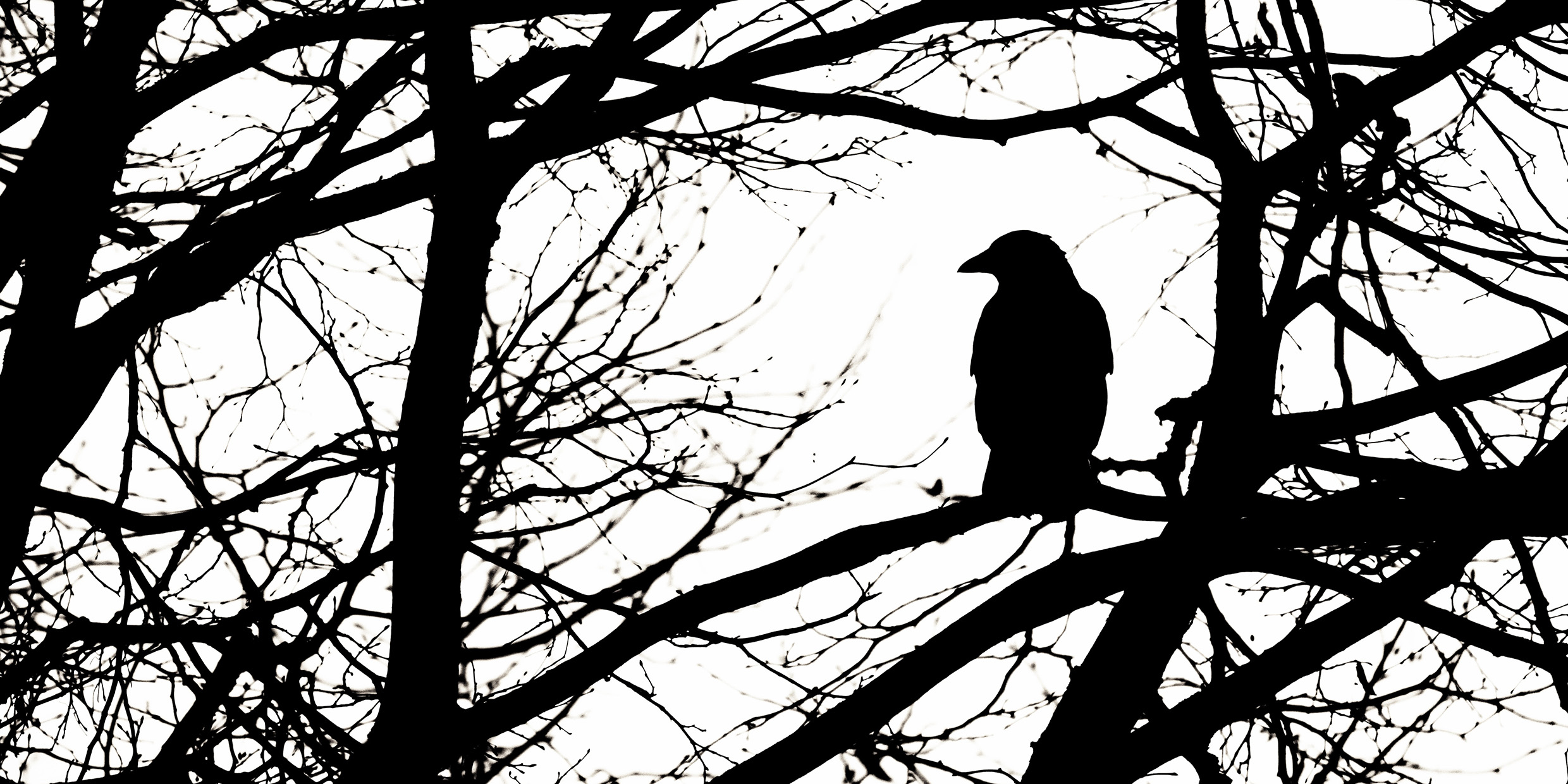Originally published 24 January 2000
Eight black crows arrayed in the sparse limbs of a leafless elm, set against a gray winter sky. Their iridescent feathers burned like eight black candles — spooky, mournful, Bergmanesque.
I stopped in my tracks, transfixed. For a long interval we apprised each other, the birds and I. Then with a chorus of caws the crows leapt from their perches, wheeled in the steely air and flew away.
What was it that happened? How to explain the way time stood still in that winter meadow? For a long moment the universe held its breath. No other creatures existed other than the crows and me. The poet Sylvia Plath might have called it a miracle: “Miracles occur,” she writes in a poem about an encounter with a black bird, “if you care to call these spasmodic tricks of radiance miracles.”
A trick of radiance. One of those singular moments that come unbidden. Once they are over we cannot quite say what happened, or why what happened was important, but we know it was important, and for a long time afterward we shiver, almost imperceptibly, like a bell after it has been struck.
When I got to my office, I took out my Stokes Nature Guide to Bird Behavior and looked for crows. Not that I expected to find there anything that would explain the intensity of my encounter with the birds in the meadow, but having been caught up even so briefly in the lives of crows I was curious about their winter habits.
During their non-breeding months, I learned, crows are extremely gregarious, roosting at night in flocks that might contain many dozens of birds. During the day, they break up into smaller groups and range widely, returning to their roosts at night. My group of eight was probably one of these smaller parties.
“There has been amazingly little study of crows by researchers, so most of the best questions about the birds still cannot be answered,” writes Donald Stokes. We know that crows are among the most intelligent of birds, sometimes using tools, and even enjoying a primitive number sense. Beyond that, crows, with their cousins the ravens, are alien and separate, relegated by myth to being harbingers of death or messengers of the gods.
Bernd Heinrich, professor of zoology at the University of Vermont, has brought the attentions of science to bear on ravens. In 1984 he saw a flock of ravens feeding on the carcass of an animal, and inviting other ravens to join in. This apparently unselfish behavior struck him as so unusual that he decided to spend a winter at a forest camp in Maine finding out if ravens are really as altruistic as they seemed.
One winter of research turned into four. Heinrich’s notebooks filled with data: numbers of birds feeding at a carcass, the kinds and frequencies of their vocalizations, the times and directions of their arrivals and departures, the kind and number of other birds and animals feeding at a carcass, and so on. Out of this wealth of data he teased an answer to his question: Not altruism, but a complex kind of social self-interest — you scratch my back, I’ll scratch yours — which Heinrich explains in his wonderful book Ravens in Winter.
And where in all of this are the spasmodic tricks of radiance, those moments of encounter with an animal or animals in the wild that so often leave one speechless, breathless, struck like a bell? Is Heinrich’s science compatible with mystery? Might not the essential meaning of ravens or crows be lost among the painstaking observations, the sea of numbers, the scientific detective work?
Wallace Stevens wrote a poem called “Thirteen Ways of Looking at a Blackbird.” We might add to the poet’s thirteen ways the scientist’s one way. No matter how deep was Heinrich’s emotional or spiritual attachment to the birds, no matter how often he experienced an ineffable encounter, it is the quality of his data that will determine the value of his science. Scientific conclusions are not plural, but singular.
Are the poet’s and scientist’s ways of seeing mutually incompatible? Must the poet and the scientist always be at loggerheads? Not at all. The strength of our civilization is that we have found a way to live with both knowledge and mystery. Because of the scientist’s way of knowing, we no longer wonder if those eight black crows in a winter tree are portents of death or a deity’s spies. And because of the scientist’s way of knowing we have more layers of crow-ness to marvel at — flocking behaviors, vocalizations, nesting and reproductive habits, even, it turns out, anatomical affinities with dinosaurs.
But none of this lessens the ancient awe that froze me thoughtless in my tracks when I saw those birds against the gray winter sky, ablaze like black candles. And when at last the birds dispersed and a thought came to mind, it was not Stokes or Heinrich but Wallace Stevens that I heard:
When the blackbird flew out of sight, It marked the edge Of one of many circles.



